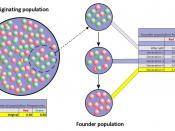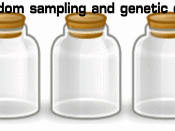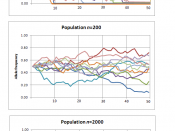Species are a group of animals or plants which are similar and can breed together to produce young animals or plants of the same kind as them. Speciation, the origin of new species, is the key process that brings new types. The four factors that contribute to the creation of new species within a population are geographical barriers, ecological isolation, behavioral isolation and polyploidy.
There are two types of geographical barriers, prezygotic and postzygotic barriers. Prezygotic barriers are barriers that hinder the mating of two members of different species and are isolating mechanisms that occur prior to a zygote being formed. Prezygotic barriers include temporal isolation, habitat isolation, behavioral isolation, mechanical isolation, and gametic isolation. Postzygotic barriers are barriers that fail the reproduction even though fertilization takes place and are isolating mechanisms that occur after fertilization. Postzygotic barriers include hybrid viability, hybrid fertility, and hybrid breakdown. The main role for these geographical isolations is to initiate speciation.
There are also three other significant geographical barriers, genetic drift, bottleneck effect, and founder effect. Genetic drift is a change in apopulation's allele frequencies due to chance. The bottleneck effect is where natural disasters such as earthquakes and floods reduce the size of the population drastically, resulting in a small surviving population that is not representative of the original population's gene pool. The founder effect is where a genetic drift occurs in a new colony by few organisms from a larger population colonizing an isolated island, lake, or some other new habitat.
Ecological or habitat isolation is a significant prezygotic barrier. Ecological isolation occurs when two species living in the same area but in different habitats do not encounter due to having different feeding, nesting, and mating locations. For example, two species of frogs live in the same area, but wood...


